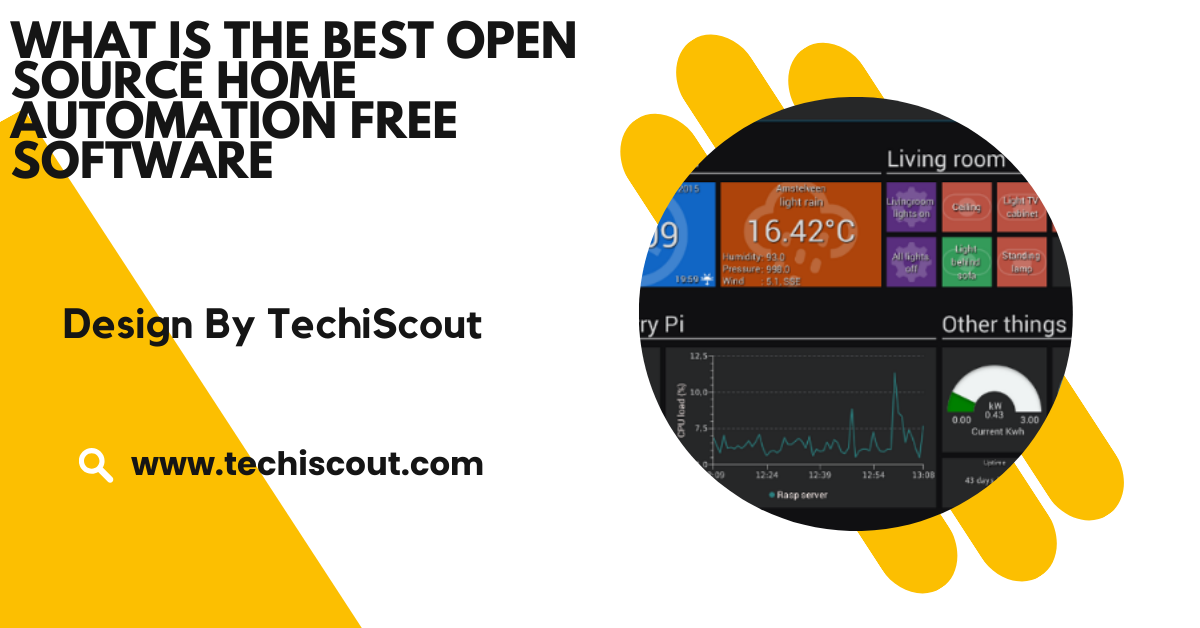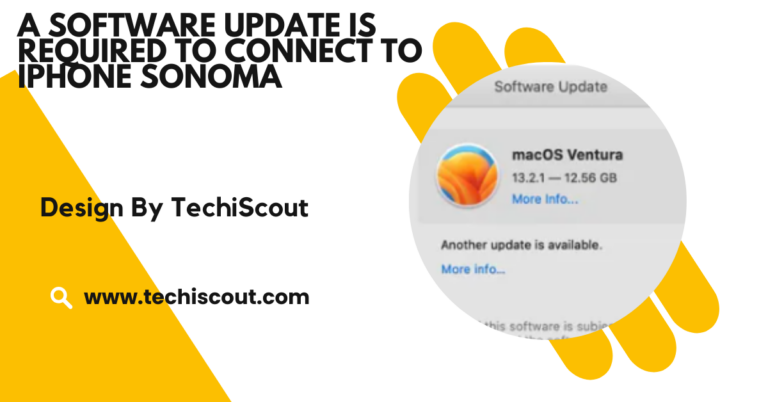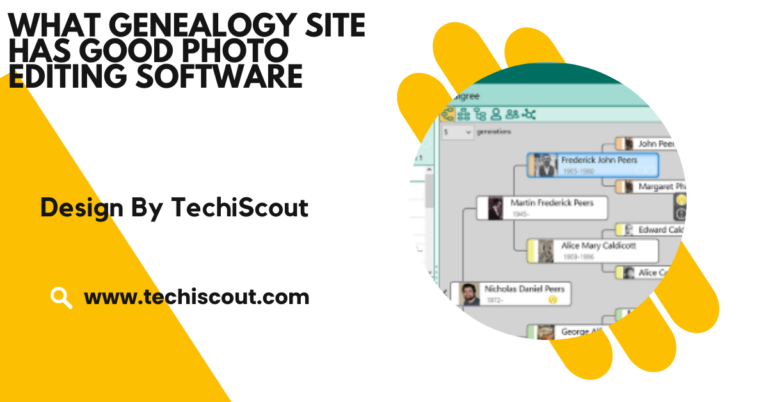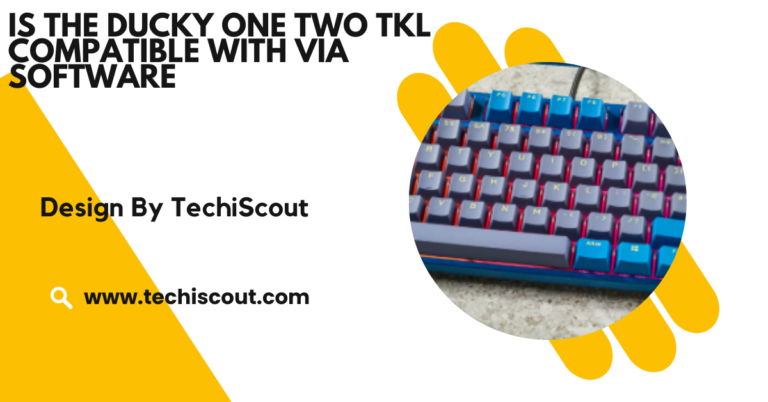What Is The Best Open Source Home Automation Free Software – Explore Now!
Top open-source home automation software includes Home Assistant, openHAB, Domoticz, ioBroker, and Node-RED.
In this article, we will explore the best free open-source home automation software, discuss their features, and help you decide which one suits your needs.
Table of Contents
Why Choose Open Source Home Automation Software:
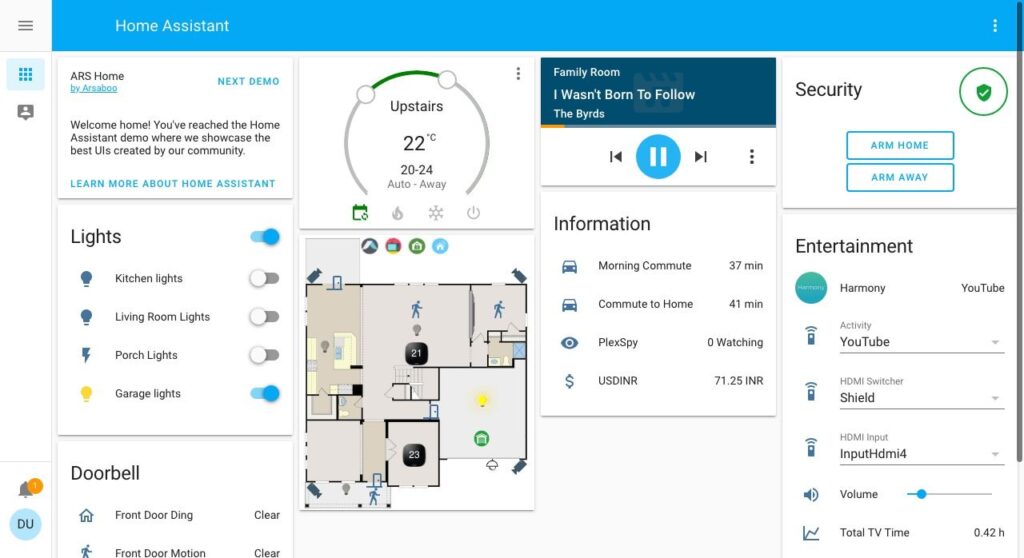
Before diving into specific software options, let’s understand why open-source solutions are gaining popularity:
- Cost-Effective: Open-source software is typically free to use, saving you money on licenses and subscriptions.
- Customizability: You can modify the software to suit your requirements, giving you control over your system.
- Community Support: Most open-source platforms have active communities that provide updates, plugins, and troubleshooting help.
- Privacy and Security: Unlike proprietary systems, you have full control over where your data is stored and how it is used.
Top Open Source Home Automation Software:
Home Assistant
Overview:
Home Assistant is one of the most popular open-source home automation platforms. Written in Python, it supports a wide range of smart devices and allows users to control them from a single interface.
Features:
- Over 2,000 integrations with smart devices.
- Mobile-friendly interface and dashboard customization.
- Offline functionality with local control.
- Active community and regular updates.
- Automation scripting with YAML.
Pros:
- Highly customizable.
- Strong community support.
- Regular updates ensure compatibility with the latest devices.
Cons:
- Steeper learning curve for beginners.
- Requires technical knowledge for advanced configurations.
Best For:
Tech-savvy users looking for a robust and feature-rich platform.
OpenHAB (Open Home Automation Bus)
Overview:
openHAB is a powerful, vendor-neutral home automation software built to integrate smart devices and technologies into a unified system.
Features:
- Compatibility with various smart home devices and protocols.
- Modular design with add-ons and extensions.
- Cross-platform support (Windows, macOS, Linux, Raspberry Pi).
- Robust rule engine for complex automation.
Pros:
- Wide range of supported devices and technologies.
- Excellent documentation for developers.
- Strong privacy focus with local control.
Cons:
- Setup can be complex for non-technical users.
- Limited mobile app functionality compared to competitors.
Best For:
Users seeking a flexible platform with extensive device compatibility.
Domoticz:
Overview:
Domoticz is a lightweight, user-friendly home automation system designed for ease of use and simplicity.
Features:
- Supports devices like Z-Wave, Zigbee, and MQTT.
- Intuitive web-based interface.
- Low resource usage, suitable for Raspberry Pi or older computers.
- Built-in support for weather data and energy monitoring.
Pros:
- Easy to set up and use.
- Ideal for low-power devices.
- Lightweight and fast.
Cons:
- Limited advanced features.
- Smaller community compared to Home Assistant and openHAB.
Best For:
Beginners or users with basic automation needs.
ioBroker:
Overview:
ioBroker is a powerful IoT platform designed for managing smart devices and home automation systems.
Features:
- Modular approach with over 300 adapters for device integration.
- Multi-language support.
- Scalable for use in both small homes and large buildings.
- Visual scripting tools for creating automations.
Pros:
- Highly modular and scalable.
- Strong visualization tools.
- Active community with frequent updates.
Cons:
- Requires more technical knowledge to set up.
- Documentation can be confusing for beginners.
Best For:
- Users who need a scalable and modular system.
Node-RED:
Overview:
Node-RED is a programming tool that connects hardware devices, APIs, and online services using a flow-based visual editor.
Features:
- Drag-and-drop interface for creating automation workflows.
- Extensive library of pre-built nodes.
- Real-time monitoring and debugging.
- Flexible deployment options.
Pros:
- Ideal for custom automations.
- Great for integrating third-party APIs and services.
- Active developer community.
Cons:
- Requires programming knowledge.
- Not a full-fledged home automation system on its own.
Best For:
Developers and tech enthusiasts who want granular control over automations.
Calaos:
Overview:
Calaos is an open-source home automation platform designed to be simple and user-friendly.
Features:
- Intuitive web and mobile interfaces.
- Support for multi-room audio and video.
- Integration with smart devices like Z-Wave and Zigbee.
- Built-in visualization tools.
Pros:
- Easy-to-use interface.
- Focus on multimedia integration.
- Free and open-source.
Cons:
- Smaller community and fewer updates.
- Limited device compatibility compared to other platforms.
Best For:
Users who prioritize ease of use and multimedia features.
OpenMotics:
Overview:
OpenMotics focuses on energy efficiency and smart control, offering a complete open-source home automation solution.
Features:
- Energy monitoring and reporting.
- Cloud and local control options.
- Integration with open-source hardware.
- Pre-configured system for easy setup.
Pros:
- Strong focus on energy management.
- Simple setup process.
- Completely open-source.
Cons:
- Limited device compatibility.
- Smaller user base and community support.
Best For:
Homeowners looking for energy-efficient solutions.
Factors to Consider When Choosing Open Source Home Automation Software:
- Device Compatibility: Ensure the software supports your existing smart devices.
- Ease of Use: Beginners may prefer platforms like Domoticz, while advanced users can explore Home Assistant or openHAB.
- Community Support: A large, active community can be invaluable for troubleshooting and updates.
- Customization Needs: Advanced users might need platforms like Node-RED for custom integrations.
- Scalability: For larger homes or businesses, choose software that can grow with your needs.
FAQ’s
1. What is the best free open-source home automation software?
Home Assistant and openHAB are among the best, offering extensive device compatibility and customization options.
2. Is open-source home automation secure?
Yes, many platforms like Home Assistant and openHAB allow for local control, ensuring data privacy and security.
3. Do I need programming skills to use open-source platforms?
Basic users can manage platforms like Domoticz easily, while advanced users may need technical knowledge for systems like Node-RED.
4. Can open-source software work with proprietary devices?
Yes, most open-source platforms support integration with devices like Amazon Echo and Google Nest.
5. Which open-source software is best for beginners?
Domoticz is ideal for beginners due to its simplicity and user-friendly interface.
Conclusion
Open-source home automation software offers a flexible and cost-effective way to control your smart home. Whether you’re a beginner or an advanced user, there’s an option for you. Home Assistant and openHAB are excellent choices for their versatility and robust feature sets. Domoticz is ideal for newcomers, while Node-RED appeals to developers seeking fine-tuned control.
Related Articles:
- Read More: Introducing a New Software into the Office
- Read More: Corsair Keyboard Software
- Read More: How I Get Network Driver Software Fron Win 98 Drive
